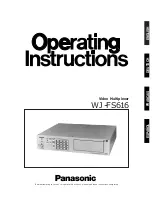
APPENDIX A
ACRONYMS
168
The SubNetwork Access Protocol (SNAP) is a mechanism for multiplexing, on networks using IEEE 802.2 LLC, more
protocols than can be distinguished by the 8-bit 802.2 Service Access Point (SAP) fields. SNAP supports identifying
protocols by Ethernet type field values; it also supports vendor-private protocol identifier.
SNMP
SNMP is an acronym for Simple Network Management Protocol. It is part of the Transmission Control
Protocol/Internet Protocol (TCP/IP) protocol for network management. SNMP allow diverse network objects to
participate in a network management architecture. It enables network management systems to learn network
problems by receiving traps or change notices from network devices implementing SNMP.
SNTP
SNTP is an acronym for Simple Network Time Protocol, a network protocol for synchronizing the clocks of computer
systems. SNTP uses UDP (datagrams) as transport layer.
SPROUT
Stack Protocol using ROUting Technology. An advanced protocol for almost instantaneous discovery of topology
changes within a stack as well as election of a master switch. SPROUT also calculates parameters for setting up each
switch to perform shortest path forwarding within the stack.
SSID
Service Set Identifier is a name used to identify the particular 802.11 wireless LANs to which a user wants to attach.
A client device will receive broadcast messages from all access points within range advertising their SSIDs, and can
choose one to connect to based on pre-configuration, or by displaying a list of SSIDs in range and asking the user to
select one (wikipedia).
SSH
SSH is an acronym for Secure SHell. It is a network protocol that allows data to be exchanged using a secure channel
between two networked devices. The encryption used by SSH provides confidentiality and integrity of data over an
insecure network. The goal of SSH was to replace the earlier rlogin, TELNET and rsh protocols, which did not provide
strong authentication or guarantee confidentiality (Wikipedia).
SSM
SSM In SyncE this is an abbreviation for Synchronization Status Message and is containing a QL indication.
STP
Spanning Tree Protocol is an OSI layer-2 protocol which ensures a loop free topology for any bridged LAN. The
original STP protocol is now obsolete by RSTP.
Switch ID
Switch IDs (1-1) are used to uniquely identify the switches within a stack. The Switch ID of each switch is shown on
the display on the front of the switch and is used widely in the web pages as well as in the CLI commands.
SyncE
SyncE Is an abbreviation for Synchronous Ethernet. This functionality is used to make a network 'clock frequency'
synchronized. Not to be confused with real time clock synchronized (IEEE 1588).
is an acronym for Terminal Access Controller Access Control System Plus. It is a networking protocol which
provides access control for routers, network access servers and other networked computing devices via one or more
centralized servers. provides separate authentication, authorization and accounting services.
Tag Priority
Tag Priority is a 3-bit field storing the priority level for the 802.1Q frame. The 3-bits provide 8 priority levels (0~7).
TCP
TCP is an acronym for Transmission Control Protocol. It is a communications protocol that uses the Internet Protocol
(IP) to exchange the messages between computers.
Summary of Contents for FRM220-MX210 series
Page 1: ...1 FRM220 MX210 Series 2 Gigabit Ethernet Multiplexer ...
Page 172: ......
Page 173: ......






































